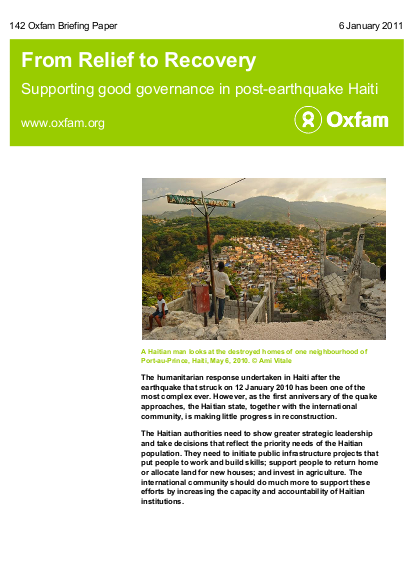142 Oxfam Briefing Paper

The earthquake that struck Haiti on 12 January 2010 had a devastating impact on the already vulnerable island nation, leaving more than 200,000 people dead and over one million homeless. In October 2010, Haiti was struck by a second disaster: as of mid December 2010, a cholera outbreak has affected more than 122,000 people, leaving at least 2,600 dead. The humanitarian response that has taken place over the past 12 months has saved countless lives by providing water, sanitation, shelter, food aid, and other vital assistance to millions of people. Yet, as Haiti approaches the first anniversary of the earthquake, neither the Haitian state nor the international community is making significant progress in reconstruction. This is deeply disappointing for the many Haitians who hoped that the country would make a fresh start and that their lives would improve, but it is not so surprising. Well before the earthquake, Haiti suffered from extreme poverty, gross inequality, chronic political instability, and weak, corrupt state institutions. Even in developed countries, disaster recovery can take a considerable length of time. In Japan, for example, it took more than seven years for the city of Kobe to recover from the 1995 earthquake. However, even a steep hill can be climbed. To deal with the challenges created by the earthquake, the new Haitian government should urgently work together with the international community to create the conditions needed to allow people to leave the displacement camps and rebuild their livelihoods.
